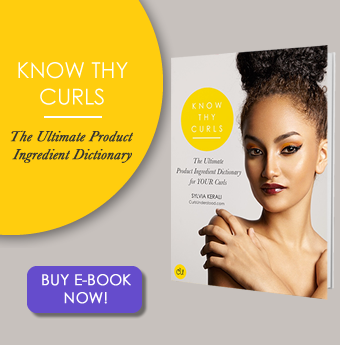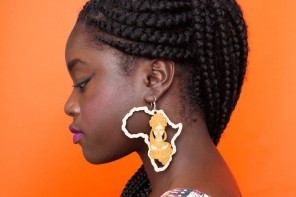For me the jury is still out on this question. Like most new naturals and transitioners, as I incessantly researched natural hair during the initial phase of my transition, I quickly learned there was a ton of jargon and acronyms I knew nothing about. Type 3, 4c, curly versus kinky… I was so confused. I constantly wondered, “what is my natural hair type?”
I eventually stumbled across a hair types chart, and some other photographic and written descriptions that helped clarify a bit. Even with this information I was still unsure of where I fell on the spectrum of type 4 hair. I also had a great deal of uncertainty in regards to how useful (or divisive) hair typing was among the natural hair community.
THE BAD
Lack of Clarity
Was I a 4c? A 4a? Do I have some 4b curls on my crown? I’ve always known that I have different textures in different places on my head, but I had no clue where my curls fell on the chart of curl patterns. I read somewhere that 4a curls have the circumference of a crochet needle and thought to myself, “Ummm, what size crochet needle?” I read somewhere else that 4c hair is prone to mega shrinkage, which I have, so does that mean I have 4c hair?
Creating Divisions
For some, hair typing dredges up injustices and negative feelings related to society’s standard of beauty. Hair typing also plays a part in the differing treatment of those that fall within and outside of this “standard.”
I’ve read many posts (and comments) about typing discrimination—whether it actually happens or not; which hair type gets featured, promoted and subsidized more; and the need for profiles, meet ups, etc. for type 4 curlies. I waded through these heavy conversations, wondering how, if at all, I was affected by the negatives of hair typing.
I had sort of arbitrarily determined that I had 4c hair, but as I learned more about my hair on this journey, my thoughts began to shift toward me having 4a hair. Was this change of thought because I was being influenced by perceptions that 4c hair wasn’t as good as 4a hair? Or was it simply because I had clearly defined curls/spirals/coils, and according to hair typing charts and posts, 4c hair doesn’t have a distinguishable curl pattern?
THE GOOD
Helpful Information and Tips
As I noted above, I had somewhat arbitrarily typed my hair as 4c hair. With that information I went about researching how to care for my curl pattern. Having a starting point was really helpful in knowing my hair’s needs, what styles might work best, and what techniques and products to avoid.
My transition was relatively smooth because I stumbled upon this information very early on and was able to apply what I learned to my cleansing and styling regimen. Without this baseline, I would have been like a tadpole in the middle of the Pacific Ocean.
I’m doing my best to recognize the good that hair typing can bring, as well as to be reflective and thoughtful about its misuse. I don’t think the natural hair community will, or even should, get away from hair typing. However, I think we need to be ever cognizant of the negative that it comes with, and be open to dialogue and criticism about its application.
I’m still not certain what my hair type is. I just know I’m on the type 4 spectrum and that is good enough (for now). I hope the natural hair community comes up with clearer definitions and explanations for curl types because I’m still trying to find out what size crochet needle 4a curls match.








I don’t think I even really believe in skin types anymore (dry versus “normal, etc.). My hair and my skin both change all the time and are different all over the place. It’s not like my blood type or something – these things just don’t stay set for life. Would be a lot easier for my bank account if they did, though.